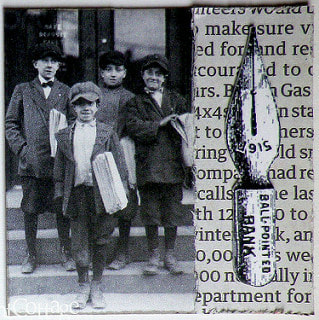‘A million moving parts’ to deliver vaccine across U.S. |
Public health officials in Nashville and Baltimore are revamping routine flu clinics to test delivery methods for coronavirus vaccinations.
Maine’s top health official Nirav Shah spends sleepless nights devising drive-through facilities where vaccinators won’t have to wear parkas in addition to their personal protective gear. Shah’s solution? Fire stations and carwashes.
Those venues are heated “so you have shelter from the snow and cold,” he said.
Buoyed by promising results from major clinical trials of two vaccines, public health officials are preparing for the daunting task ahead of delivering those shots to tens of millions of Americans.
The vaccines need to be distributed across 50 states, plus U.S. territories, that have different demographics and shifting needs. The two leading products must be stored at different temperatures and have different minimum orders, with each requiring two doses but at different intervals.
Complicating matters: A final decision on who is eligible to get the early doses must wait for a federal recommendations. That can’t happen until regulators authorize the new vaccines. And once set in motion, the distribution — from loading dock to upper arm — has to be accomplished equitably and with as few handoffs as possible, all done amid a pandemic.
The stakes are enormous. The massive undertaking to immunize most of the population requires extraordinary communication, planning and coordination. Federal, state and local officials are working with hospitals and pharmacies, suppliers of dry ice, gloves and vials, and carriers. A successful operation could transform the health and economic well-being of society.
“There are a million moving parts … to mount an immunization campaign of historic proportions,” said Bruce Gellin, president of global immunization at the Sabin Vaccine Institute. He warned that there are pitfalls at every step.
Officials are wrestling with how to ensure vulnerable populations receive the vaccine. Almost certainly at the front of the line: about 17 million front-line health care workers. Next up are likely to be other essential workers, many of whom come from Black, Latino and Asian communities hard hit because of socioeconomic factors.
“It’s like treating an individual patient while rebuilding the entire health care system,” said Alfred Sommer, former dean of the Johns Hopkins Bloomberg School of Public Health, who was part of the team that vanquished smallpox four decades ago.
Once the vaccines are authorized by the Food and Drug Administration, doses will be allocated to each state according to population, with some held in reserve in case of loss or theft. Within 24 hours of FDA action, doses will be “prepositioned” at key sites designated by each state where vaccines will be administered to the first priority groups.
U.S. government officials anticipate having 40 million doses of vaccines from pharmaceutical giant Pfizer and biotech firm Moderna by year’s end, enough to vaccinate 20 million of U.S.’s 330 million.
The federal government is paying for much of the delivery and vaccine administration costs. But state officials are asking Congress for at least $8 billion for vaccination efforts; to date, $200 million in federal funds has been sent to state, territorial and local jurisdictions.
The vials will be sent first to large hospitals and other sites where mass immunization clinics can take place. But even that first step presents daunting travel, storage and handling requirements.
The Pfizer vaccine will be shipped to sites selected by states in GPS-tracked, suitcase-sized “shippers” with 50 pounds of dry ice pellets, and must be kept at minus-70 Celsius. Upon arrival, the dry ice must be refreshed, or the vials of vaccine must be transferred to ultralow-temperature freezers. The container cannot be opened more than twice a day, the dry ice must be replenished every five days, and the contents must be used within 15 days.
The Moderna vaccine is less demanding, with a storage temperature of minus-20 Celsius, which is the same for many medications.
The shipments need to be coordinated with kits of syringes, needles, face masks and other supplies.
From there, every state, territory and each of six major metropolitan areas is responsible for its own deployments. States are in varying stages of preparation. Many have designated large hospital systems to be the first places to receive vaccine.
Maine has held meetings with transportation officials and the National Guard to work through worst-case scenarios, Shah said. If there’s a flood or loss of power, a backup generator for the freezer would kick in. If shots are transported during a blizzard, the vaccine convoy could follow 30 minutes behind a salt truck.
Clinicians will need to be trained to administer the vaccines, which have different protocols. The Pfizer version must be diluted before the shot is given — inverting the vial 10 times “gently,” according to the Pfizer instructions. In contrast, the Moderna vaccine does not require on-site mixing and should not be shaken.
To start with, vaccination efforts may favor urban areas. That’s because the vaccines will arrive in big batches: For Pfizer, the minimum order is 975 doses. Moderna’s smallest batch is 100 doses.
“The most disadvantaging issue is the minimum order,” said Ann Lewandowski, program manager for the Southern Wisconsin Immunization Consortium, a group of 42 rural hospitals in Wisconsin. None has the resources to purchase a special freezer, which can cost $12,000 to $15,000.
Health care personnel from rural hospitals may have to drive to get their shots at larger hubs, Lewandowski said. That could pose a barrier for staffers already stretched thin caring for patients with COVID-19.
A Pfizer spokeswoman said the company is working on a smaller pack size that will be ready early next year.
Final recommendations on who gets the first shots will come from an independent committee on immunizations that advises the CDC.
The new vaccines are likely to produce more unpleasant side-effects than a flu shot, potentially leading recipients to need a day or two off work.
“Any group of individuals that work together, we can’t vaccinate them all at the same time,” said Thomas Talbot, chief hospital epidemiologist at Vanderbilt.
That assumes priority groups — health workers and essential workers — are willing to take the first shots. Health officials say they are increasingly worried about staffers who say they won’t take the vaccine, according to internal surveys and conversations with clinicians.
“When it comes to this vaccine, what I’m hearing from colleagues … is that their confidence is lacking,” said Pamela G. Rockwell, a physician representing the American Academy of Family Physicians. “We need to do this right and get our patients convinced that this is safe so we can save our country.”
HURDLES AHEAD
- Minus-70 Celsius Temperature Pfizer needs
- 5 days Lasts at refrigerator temps
- Minus-20 Celsius For Moderna’s vaccine.
- 40 million Doses expected from Pfizer and Moderna by year’s end
- 20 million People initially vaccinated
- 330 million U.S. population
- $8 billion States’ request to Congress
- $200 million Federal funds sent so far



 RSS Feed
RSS Feed